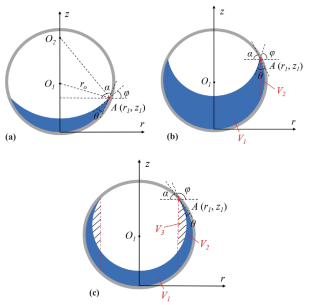Profiles of free Surfaces in Revolved Containers Under Microgravity
Abstract
Nowadays a propellant residual gauging method based on the thermal response of the tanks’ wall is developed. And the liquid distribution and meniscus height have great effects on the thermal response. Profiles of liquid free surfaces in revolved containers under microgravity are studied through theoretical analysis and numerical simulation in this paper. The analytical formula for the static profile of the liquid surface in the spherical tank is established. It shows that the profile is a section of a circle cut off by the tank wall. For given the geometry of the tank, liquid volume and contact angle, the profile of the free surfaces under microgravity can be obtained by using the Shooting method based on the theoretical model. Numerical simulation is carried out with the Volume of Fluid method, and it is verified that the static profiles at different contact angles and liquid filling rates fit the theoretical descriptions. It is concluded that the meniscus height increases slowly as the filling rate increases, and the smaller the contact angle, the more obvious this trend. Then the theory is extended to the tanks of arbitrary shapes, and the critical position of the profile is derived. Below the critical position the propellant may accumulate in some corners or pits, which makes it unable to be fully utilized. The critical position is related to the shape of the tank and the contact angle. This research is of great value for the prediction of the static profiles of liquid surfaces in tanks and the propellant residual gauging.


 求助内容:
求助内容: 应助结果提醒方式:
应助结果提醒方式:


